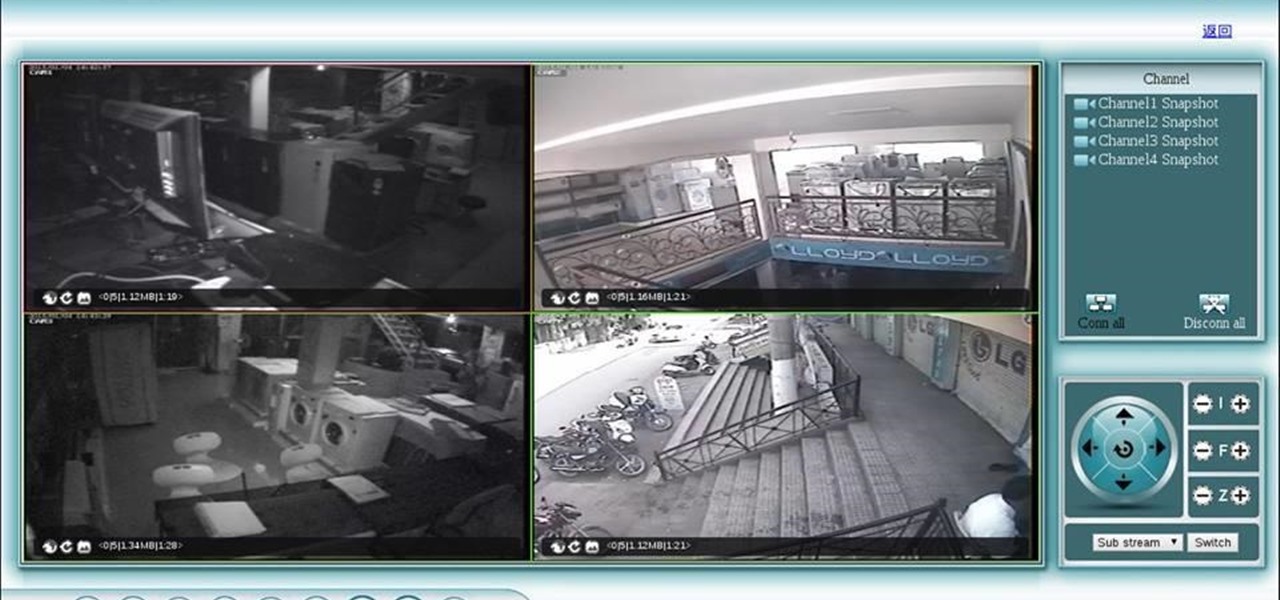

Same “Hack” can be done on almost any embedded system if you’re smart enough.Īlso what is the point to root an IP Camera? It’s still gonna phone home unless you plan to use a 3rd party firmware. Sure enough the one I bought was intended to be part of a Tor node.

Didn’t have the silver sticker on the box, was indeed an overseas model and I compared the stock firmware with the firmware on the device. Well for giggles I bought a Hikvision DVR from eBay for 30 bucks. Basically a zombie system so a hacker could use it to preform a DDoS attack or a node for a Tor connection. He said it’s an older cheaper overseas model with modified firmware for not so much to spy on the user but use the users internet connection. He said you should only buy from an authorized dealer resale and do not try and use products from eBay or Amazon. He went into detail on why each product has a silver sticker on the box flap and so on. I work for a Alarm company and we had a guy from Hikvision come in and show off the product. Respectively what the devices can be configured to do on a regular basis.
Ip cam hacked full#
(I’m not talking VPN but full termination of RTSP access, let alone ONVIF, the web interface or the usual proprietary protocol.) You do not even want to know how vulnerable or unprotected the local interfaces usually are. Surprisingly enough, IP cameras which stream to a cloud service and only from there to an end point client are usually more secure. A reset button for such purpose isn’t viable in public spaces, and a hardware swap isn’t either. The more expensive the device or the more costly to physically reach for a technician, the higher the chance that a backdoor has been established which is used both for regular diagnosis, as well as manually resetting forgotten credentials. I can guarantee you the latter first hand also for premium vendors, or even more so: especially so.

Pretty much all these systems have service passwords, service accounts, or whatever else you’d like to call it. Your assumption that backdoors would be limited Hikvision systems is wrong, not the assumption about backdoors at all. Of course, the nature of food inevitably has direct implications upon the health of the end consumers, the general public, so it’s only obvious that the regulatory prescriptions that accompany the industry will accordingly be more thorough compared to others, but I’ve always been curious just how varied the requirements on traceability is for the other sectors? Every revision to formulation (which I believe would be the equivalent of an “assembly” for the tech industries) is also tracked for traceability purposes, as for us it is of great importance that batches correspond with the correct packaging - or more specifically, their labeling - when changes that impact declarations are effected. We run two trace exercises annually (a forward and a backward trace) along with a mock recall, internal auditing, as well as third party auditing. Really? Is that still acceptable practice? I don’t know about other industry sectors, but in the food manufacturing sectors full bidirectional traceability along the supply chain is a near ubiquitous requirement (at least for anything that goes into commerce here in the US). Posted in Linux Hacks, Reverse Engineering Tagged reverse engineering, root access, XM530 Post navigation This then leaves the next question, of what to do with such an IP camera after you have gained root access? After tackling that issue with some creative hacking, the next challenge was to figure out the root password, using a dump of the firmware image, which led to even more exploration of the firmware and the encoding used for the root password.Įven if some part of these challenges were possibly more accidental than on purpose by the manufacturer, it shows how these SoC-based Linux devices can put up quite a fight. The first obstacle that struggled with was that U-Boot was configured to not output Linux kernel boot messages.
Ip cam hacked serial#
Merely firing up a serial terminal application and connecting to this UART is not enough to get access, of course. This camera’s firmware provides the usual web interface on its network side, but it also has a UART on its PCB, courtesy of the unpopulated four-pin header. This was the goal of when he purchased a cheap Chinese IP camera using an XM530 ARM-based SoC to explore and ultimately get root access on. With so many cheap network-connected devices out there being Linux-powered, it’s very tempting to try and hack into them, usually via a serial interface.


 0 kommentar(er)
0 kommentar(er)
